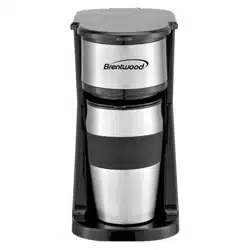Loading ...
Loading ...
Loading ...

4
• Do not operate the product if it has a damaged or cut Power Cord or plug, if
wires are exposed, if it malfunctions, if it is dropped or damaged, or if the
Motor Housing is dropped in or exposed to water.
• This product has no user-serviceable parts. Do not attempt to examine or
repair this product yourself
. Please review the Warranty Policy on Page 9.
• Do not put any stress on the power cord where it connects to the product, as
the power cord could fray and break.
SPECIAL INSTRUCTIONS:
A short power supply cord is provided to reduce the risk of becoming entangled
in or tripping over a longer cord. An extension cord is not recommended for use
with this product, but if one must be used:
− The marked electrical rating must be at least as great as that of the product.
− Arrange the extension cord so that it will not drape over the countertop or
tabletop where it can be tripped over or pulled.
WARNING: This product is equipped with a polarized plug (one
blade is wider than the other blade) to reduce the risk of
electrical shock. This is a safety feature. The plug will fit into
a polarized outlet only one way. If you are unable to insert the
plug into the electrical outlet, try reversing the plug. If the
plug still does not fit, contact a qualified electrician. Never use the plug with an
extension cord unless you can fully insert the plug into the extension cord. Do
not alter the plug. Do not attempt to defeat the safety purpose of the polarized
plug.
Before First Use
IMPORTANT: Please check all packaging material carefully before discarding as there
may be accessory parts contained within the packaging material.
We recommend running the appliance once full through before first use. This allows
the dust or impurities to pass through.
Attention:
First use may cause a slight odor or small smoking upon heating, it is
normal. This is a result of the heating element chemical reaction. It quickly goes away.
FOR HOUSEHOLD USE ONLY
SAVE THESE INSTRUCTIONS
FOR FUTURE REFERENCE
Loading ...
Loading ...
Loading ...
